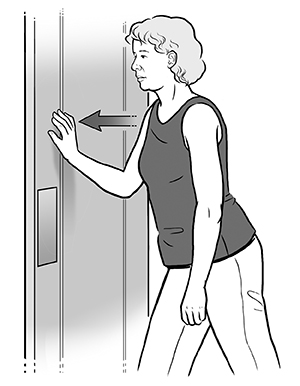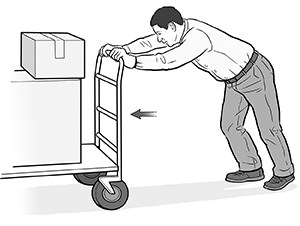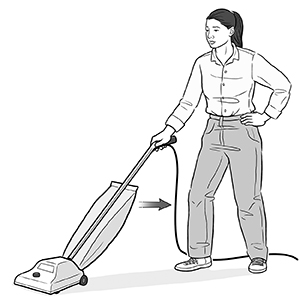Pushing can be hard on your back. Pulling can be even harder. So, push rather than pull when you can. Follow the tips on this sheet to help protect your back.
Pushing a light object
-
Bend your knees slightly. Keep your ears, shoulders, and hips in line.
-
Tighten your stomach muscles.
-
Lean in slightly toward the object you’re pushing.
-
Use your legs and the weight of your body to move the object.
-
Take small steps.
Pushing a heavy object
-
Tighten your stomach muscles.
-
Bend your knees.
-
Lean in toward the object you’re pushing. The heavier the object, the more you should lean.
-
Try not to hunch your back. Keep it straight.
-
Use your legs and the weight of your body to move the object.
-
Take small steps.
Pulling
-
Face the object you’re pulling.
-
Tighten your stomach muscles.
-
Keep your knees slightly bent.
-
Step backward and pull the object with you.
-
Don’t twist your body. If you’re using one hand, putting the other hand on your hip can help keep you from twisting.
-
When pulling heavy objects, lean back, and bend at the knees and hips. Keep your arms straight. Let your body weight pull the load.




